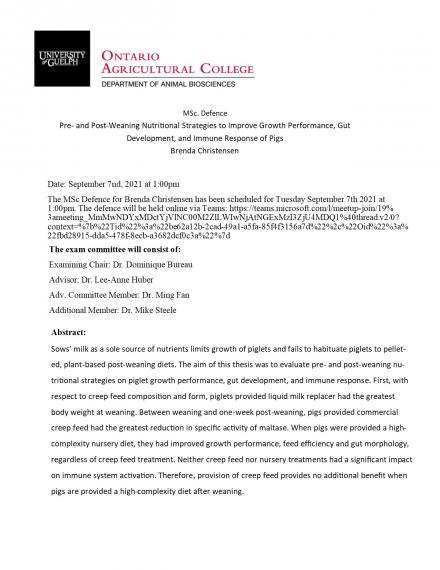Brenda Christensen's Upcoming MSc Defence
Date and Time
Location
Teams: https://teams.microsoft.com/l/meetup-join/19%3ameeting_MmMwNDYxMDctYjVlNC00M2ZlLWIwNjAtNGExMzI3ZjU4MDQ1%40thread.v2/0?context=%7b%22Tid%22%3a%22be62a12b-2cad-49a1-a5fa-85f4f3156a7d%22%2c%22Oid%22%3a%22fbd28915-dda5-478f-8ecb-a3682dcf0c3a%22%7d

Details
Sows’ milk as a sole source of nutrients limits growth of piglets and fails to habituate piglets to pellet-ed, plant-based post-weaning diets. The aim of this thesis was to evaluate pre- and post-weaning nu-tritional strategies on piglet growth performance, gut development, and immune response. First, with respect to creep feed composition and form, piglets provided liquid milk replacer had the greatest body weight at weaning. Between weaning and one-week post-weaning, pigs provided commercial creep feed had the greatest reduction in specific activity of maltase. When pigs were provided a high-complexity nursery diet, they had improved growth performance, feed efficiency and gut morphology, regardless of creep feed treatment. Neither creep feed nor nursery treatments had a significant impact on immune system activation. Therefore, provision of creep feed provides no additional benefit when pigs are provided a high-complexity diet after weaning.